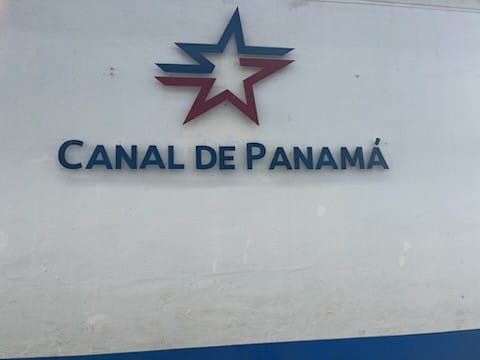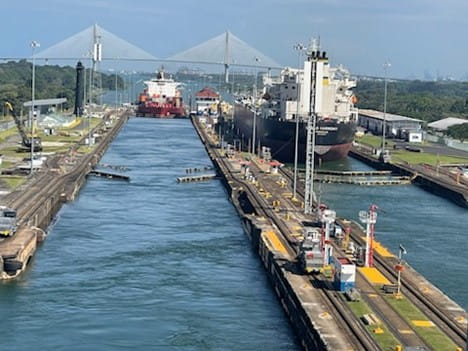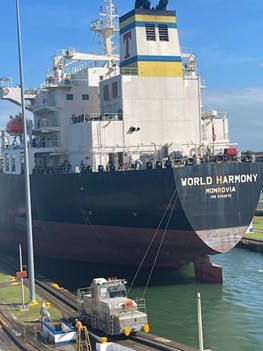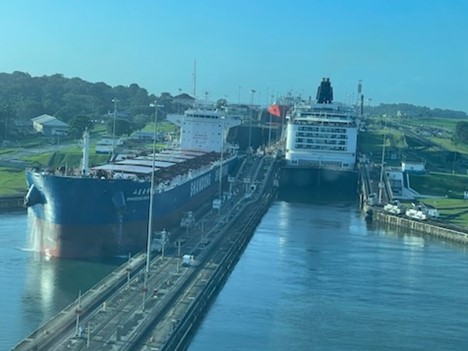Panama Canal Transit January 2025
By Joel Singer
In January 2025 I took a cruise that transited the Panama Canal. The canal, completed in 1914, connects the Caribbean Sea to the Pacific Ocean. Prior to the canal being built, ships would need to take the lengthy and hazardous route around the southernmost tip of South America through either Drake Passage, the Strait of Magellan or Beagle Channel with the potential of encountering severe weather and sea conditions.

With the completion of the Panama Canal, passage to and from the Pacific Ocean and Caribbean Sea was greatly reduced to just 51miles and around eight hours, reducing the risks and enabling speedier travel for people and goods.
The original canal consists of two lanes of locks lowering and raising the water levels to allow vessels to pass between the Caribbean Sea and Pacific Ocean with the manmade Lake Gatun between the locks on each of the Caribbean and Pacific sides.

The original canal consists of three locks on both the Caribbean and Pacific sides. The original locks are 110 feet wide and have been joined by a third wider lane of locks completed between 2007 and 2016. This third set of locks was constructed to allow for the passage of larger Neo-Panamax ships which include the much larger container and mega-cruise ships.

On our passage through the canal, it was fascinating watching the ships in front of us and behind us navigate the locks and seeing each lock open and close and watch the water levels change. It is estimated that the water volume used for each ship to pass is 52 million gallons.
It was fascinating to observe the activity on each side of the locks as the ships passed. Every ship is connected through steel cables to electric locomotives which guide each ship to safely pass through the canal, ensuring that ships do not get offline and stuck in the canal.
It was certainly an eye-opening experience to see all the work that it entails for every ship to safely pass through the canal sometimes with less than 12 inches clearance between the ship and the sides of the locks.
The magnitude of the construction of the canal, over 100 years ago without the use of modern machinery and techniques was truly astonishing.


